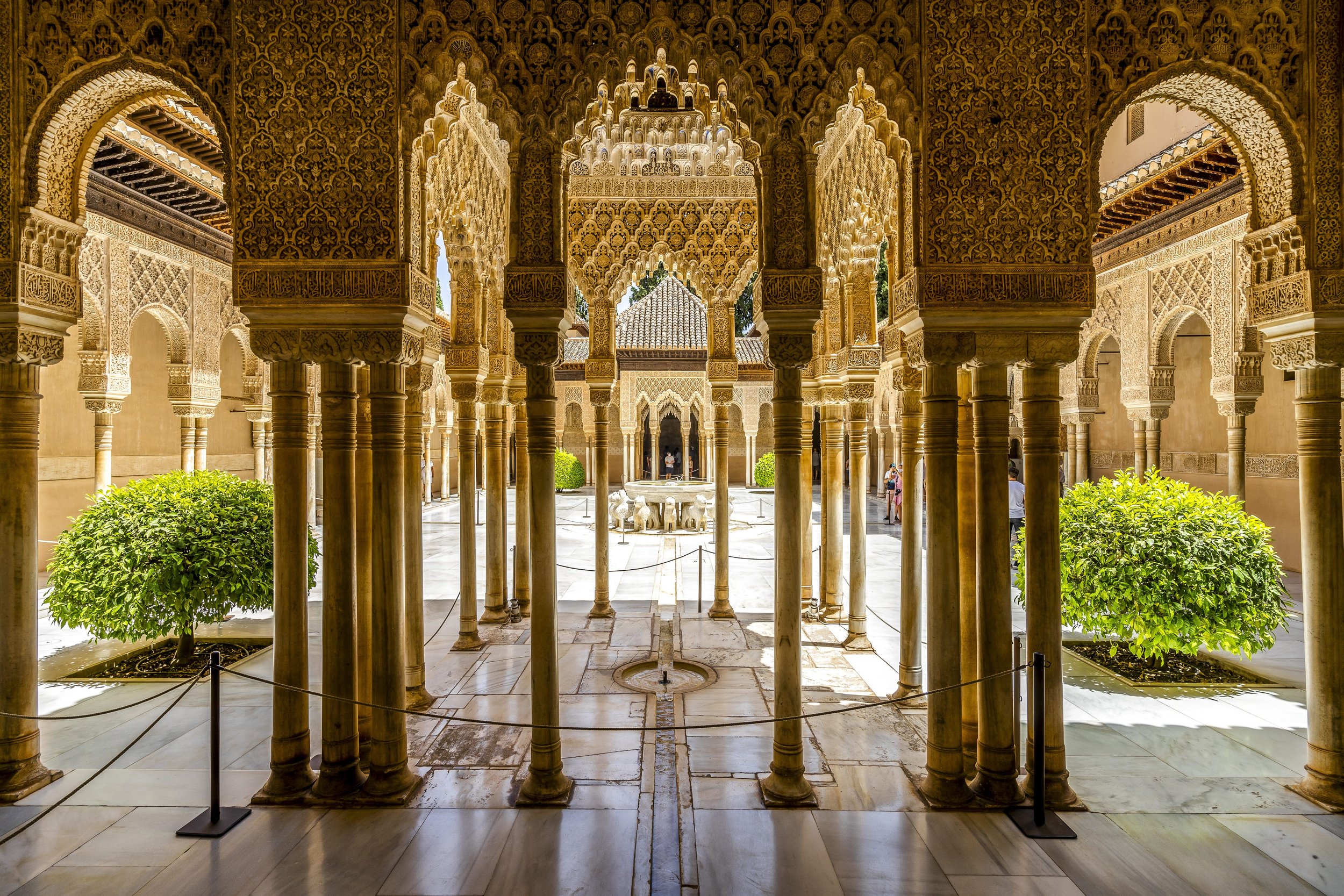Alhambra, Nasrid Dynasty
Nasrid Dynasty, Alhambra, 1354-1391, Granada, Spain
Located in Granada, Spain, Alhambra is a medieval palace recognized by its elaborate decorative style, beautiful gardens, complex planning, and fountains. With intimate spaces built at a human scale, the architects of Alhambra constructed a fortress in the middle of Granada that is both imposing and inviting.
Known in Arabic as Qal’at al-Hamra, or Red Fort in English, construction of Alhambra began in 1238 by the Nasrid Dynasty, the last Muslim empire to rule in Spain. Enclosed by 1 mile of fortified walls containing 30 towers, the fortress can somewhat be seen as a city within a city. Only four gates provide entrance to the 26 acre complex, providing a highly controlled and monitored setting when it was at its peak in the 13th through 15th centuries. Within the city walls, there are three distinct areas: the resident for the ruler and their close family, the Alcazaba (citadel), and a Medina (city) for court officials. Similar to how the Palace of Versailles housed Louis XIV’s family, close friends, and court officials, Alhambra was a space where the entirety of the upper and bureaucratic class resided.
Although the city gates and fortified towers present Alhambra to be a closed off and militarized compound, the city inside boasts of numerous paths, gardens, and gates connecting various parts of the city. In the event of an attack, each of these gates could easily be closed, isolated the invading enemy, while also protecting those within the city. Furthermore, the lifeless walls protecting the city sharply contrast the beautifully crafted inner-city walls, pictured above. Ornate carvings are in abundance, covering nearly every wall and ceiling, providing a sense of luxury and opulence.
Within Alhambra, the Comares Palace, the Palace of the Lions, and the Portal Palace are three of the most celebrated structures built during the 14th century. The Comares Tower, the tallest in Alhambra, contains the Salón de Comares, known as the Hall of the Ambassadors. Built by Yusuf I, the room boasts diverse decorations and highlights the elaborate style of Islamic architecture and decoration. Double arched windows provide views of surrounding Granada, while intricate geometric patterns cover the walls, displaying a form of horror vacui. The Palace of the Lions (pictured above) is a separate building adjacent to the Comares Palace which was connected to the complex following the fall of the Nasrid Dynasty to the invading Christians. Built by Mhuammad V, the palace features an elaborate hydraulic fountain system featuring 12 stone carved lions. Arguably the most impressive building within the city walls, the Palace of the Lions is a marvel of Islamic engineering and arts, demonstrating the intellectual and artistic abundance of the Nasrid Dynasty. Finally the Portal Palace, built in the early 14th century, contains a large pool ornamented by a five-arched arcade at the end of the pool. One of the original buildings of the complex, the Portal Palace uses light and water to reflect light and the decorative arcade, creating a sense of added space that would have otherwise been lost.
Alhambra complicates the relationship between interior and exterior as shaded patios and covered walkways seamlessly transition into well-lit interiors, shaded courtyards, and sun-filled gardens. Water was incorporated into the architecture, bringing not only sound but also cooling qualities that provide a break from the hot and humid conditions of Granada during the summers.
